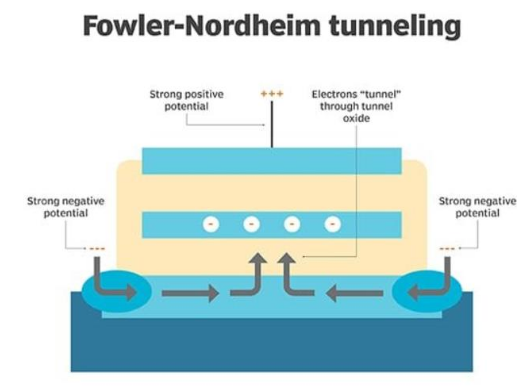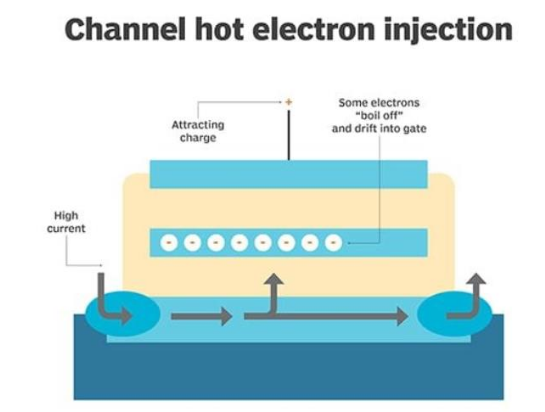septembre 11, 2020
2694
Electrons are added to or removed from the floating gate to change the threshold voltage of the storage transistor. Changing the voltage will affect whether the cell is programmed to zero or one.
The flash memory cell consists of a memory transistor with a control gate and a floating gate.
A process called Fowler-Nordheim tunneling removes electrons from the floating gate. Fowler-Nordheim tunneling, or channel hot electron injection, traps electrons in the floating gate.
Using Fowler-Nordheim tunnel technology, data will be erased by the strong negative charge on the control gate. This forces electrons into channels where there is a strong positive charge.
When the Fowler-Nordheim tunnel is used to trap electrons in the floating gate, the situation is reversed. Electrons manage to reach the floating gate through the thin oxide layer in the presence of a high electric field, and carry strong negative charges on the source and drain of the cell, and strong positive charges on the control gate.

A process called Fowler-Nordheim tunneling removes electrons from the floating gate.
Channel hot electron injection (also called hot carrier injection) allows electrons to break through the gate oxide layer and change the threshold voltage of the floating gate. This breakthrough occurs when electrons obtain sufficient energy from the high current in the channel and the attractive charge on the control grid.

Channel hot electron injection enables electrons to penetrate the gate oxide and change the threshold voltage of the floating gate.
"No matter whether the device containing the flash memory cell is receiving power due to the electrical isolation created by the oxide layer, electrons will be trapped in the floating gate. This feature allows flash memory to provide persistent storage.